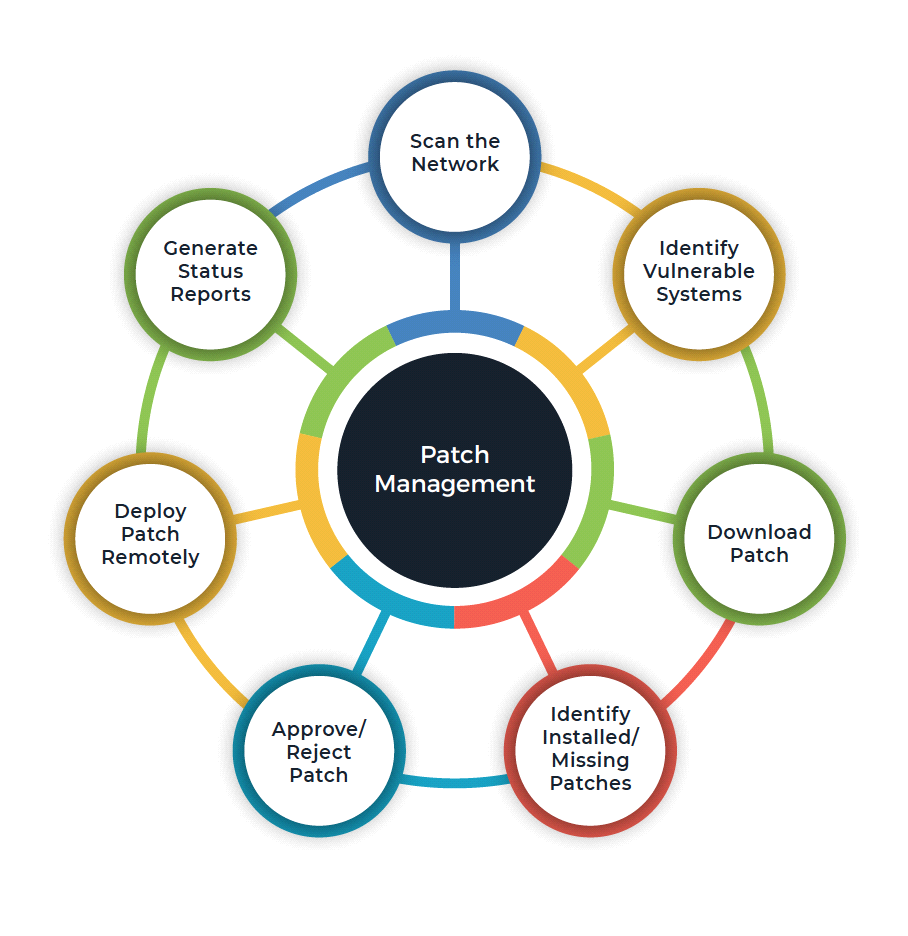What is Patch Management?
As we move into an era of hybrid IT infrastructure where organizations are increasingly relying on both on-premises and cloud infrastructure, the risk of security vulnerability has increased many folds.
Nearly 60% of organizations that suffered a data breach in the past two years cited as the culprit a known vulnerability for which they had not yet patched. – Darkreading
Patching is an active defense to combat this menace. In this blog, we are going to explore what is patch management, why do we need patch management, benefits, some common steps used in patch management, and how patch management software is used.
What is Patch Management?
Patch management is the process of auditing, assessing, and deploying patches to a system in order to reduce security risks.
Software vulnerabilities are constantly being discovered and patches are developed by the software vendor to fix the vulnerability.
Patch management is not only important for software vulnerabilities but also for vulnerabilities due to misconfigurations and social engineering attacks. With the growth in mobile devices and cloud computing, patch management also becomes important because the operating system and software on devices can also be vulnerable.

Why Do We Need Patch Management?
57% of data breaches are attributed to poor patch management. – Ponemon
Patch management is an important activity of IT managers to maintain the health of their IT infrastructure. It is an active process that ensures that there are no vulnerabilities in the overall system and that all security updates are installed.
A lot of companies find themselves with a problem when they neglect to update their software. They find out about it when they receive a notification from Microsoft, saying they have been hacked and need to change their password immediately. This can be avoided by having patch management in place.
Benefits of Patch Management
Patches are necessary to maintain the security and stability of any software, service, or device. Here are some of the benefits of patch management to sum it all:
- Patches can fix anything from security issues to improving usability. They can be fixes for minor bugs or problems.
- Whenever a new update happens for popular software, service, or device, it’s important to update as soon as possible to ensure you are protected against security threats.
Updating is usually very easy and can be done in only a few seconds. If you prefer to do more research on the updates, you can do so within the settings area of the app, software, or device. Updating can also be done automatically by setting the option to update automatically.
General Steps in Patch Management
In this section, we are going to explore the steps in patch management.
Patch management is a highly technical and demanding process that requires an IT professional with the right knowledge and experience in order to be successful. Patch management can improve system security, stability, performance, and usability by applying patches to installed software as they become available.
Steps:
- Identify vulnerabilities that are present in the system as well as those that are likely to be exploited by attackers.
- Identify patches for these vulnerabilities that are available from vendors or other sources (e.g., open-source)
- Test patches on a small group of systems before deploying them broadly on production systems.
- Deploy patches as soon as possible after they have been tested.
How is Patch Management Software Used?
Patch management software is used to keep the computers patched and secure. It helps in executing patches, keeping track of which ones have been executed, and when new patches are available.
The patch management software like Motadata ServiceOps Patch Manager helps in patching the operating system, security updates, and non-security-related updates. The software helps in making sure that the computer’s safety and security are not compromised by any unauthorized access or malicious attack on the system.
Author Bio:
My name is Raj Dodiya, I am a content writer and SEO at motadata. I have already written lots of article for motadata company here I give you a blog link to see example: https://www.motadata.com/blog/